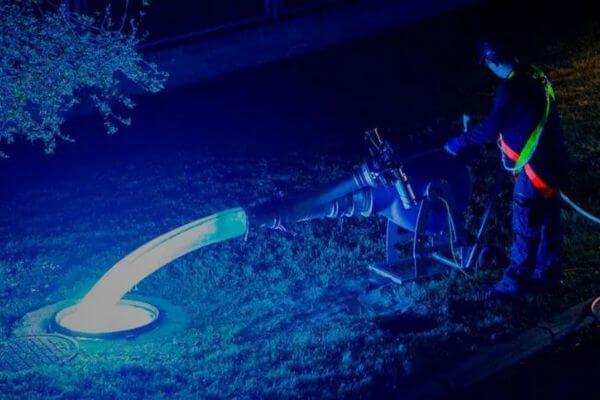When faced with problems in our plumbing, one of the biggest concerns is often how to fix it without causing major inconvenience and unnecessary expense. Traditionally, repairing pipes involved extensive excavation, noise, dust and significant disruption to daily life. Fortunately, today there are innovative methods that allow pipe repair without the need for extensive excavation, known as trenchless or trenchless methods. In this post, we will make a detailed comparison between trenchless and trenchless methods, highlighting the advantages and disadvantages of each and analysing in depth their applications and results.
What are traditional repair methods?
Traditional pipe repair methods involve considerable excavation to gain direct access to the damaged pipe. This procedure is quite invasive, especially when dealing with pipes buried under streets, gardens or buildings. This usually involves breaking up pavements, gardens or any structure above the affected pipe, generating a great visual impact and disruption to the daily life of the residents or users of the facilities.
Once the problem has been located by excavation or rudimentary methods, the ground is opened up to access the damaged section. This phase usually involves heavy machinery, generating noise, dust and construction debris. This is followed by repair or replacement, as necessary, and finally, backfilling and restoration of the excavated area, which can involve significant additional costs for aesthetic repairs.
Advantages of traditional methods
Among the main advantages of these methods is that they allow direct visual inspection of the problem, which facilitates accurate assessment of severe or critical damage. In addition, they are often effective in cases of extremely deteriorated or completely collapsed pipes, where more modern methods may not be sufficient.
Disadvantages of traditional methods
However, the main disadvantage is that these methods are highly invasive, causing significant inconvenience to those living or working nearby. The execution time is usually extensive, sometimes lasting for weeks, and the economic costs are high due to the complexity of the excavation and subsequent restoration of the land.
What are trenchless methods?
Trenchless repair technology, also known as trenchless repair, has been developed as a revolutionary alternative to traditional methods. These procedures allow pipes to be repaired or replaced without deep and extensive excavation, considerably reducing the inconvenience and time of execution.
Types of trenchless methods
The most popular techniques include Cured-In-Place Pipe (CIPP), Pipe Bursting and spot repairs using internal sleeves. Each method is tailored to specific circumstances and has its own particularities.
1. Pipe jacketing (CIPP)
Casing, a key technique in the repair of pipelines without building work, consists of inserting a sleeve impregnated with a special resin that adheres internally to the existing pipe. Subsequently, this sleeve is hardened by heat or ultraviolet light, forming a new continuous pipe, without joints or leaks. This method is notable for its speed and the uniform quality of the finish.
2. Pipe Bursting
This method involves inserting a specialised head that fractures and pulls apart the old pipe while simultaneously installing a new pipe in its place. It is especially useful when existing pipes are extremely deteriorated or blocked by solid deposits.
3. One-off repairs
This technique is ideal for minor and specific problems, such as cracks or small breaks. A shorter sleeve is used which is installed only in the damaged area, avoiding the need to replace entire sections and further minimising invasiveness.
Advantages of trenchless methods
The advantages of these methods are manifold: less disruption to residents, significantly reduced execution times, lower economic cost by eliminating heavy excavation and restoration work, and less environmental impact due to reduced waste.
Disadvantages of trenchless methods
Limitations include the fact that they require specialised equipment and highly trained technicians, which can raise initial costs in some cases. In addition, they are not always feasible in situations of extremely severe damage requiring complete replacement or thorough visual inspection.
Direct comparison between the two methods
Comparing both methods in key aspects, we can conclude that the execution time and inconvenience to users and neighbours are significantly lower with trenchless methods. Costs are also considerably reduced by avoiding extensive excavation and subsequent restoration. However, both methods, if well executed, can guarantee durable solutions.
When to choose each method?
Choosing one method over another will depend on the type and extent of damage, as well as specific factors such as the location and accessibility of the affected pipe. Traditional methods are ideal for totally collapsed or badly damaged pipes, while trenchless methods are more appropriate for less invasive repairs, thus avoiding unnecessary disruption and excessive costs.
For related issues, you can consult our specialised unblocking and pipe cleaning services or find out about septic tank emptying.
In conclusion, technological advances today allow for innovative solutions such as trenchless repairs, offering clean, fast and economical alternatives compared to traditional techniques. The choice between methods will always depend on the technical analysis of the problem, the assessment of the affected infrastructure and the specific needs of the environment. Finally, experienced and trained professionals will be essential to ensure that the chosen solution is effective, durable and as non-disruptive as possible.
For more technical information on these technologies you can visit ISTT (International Society for Trenchless Technology).

